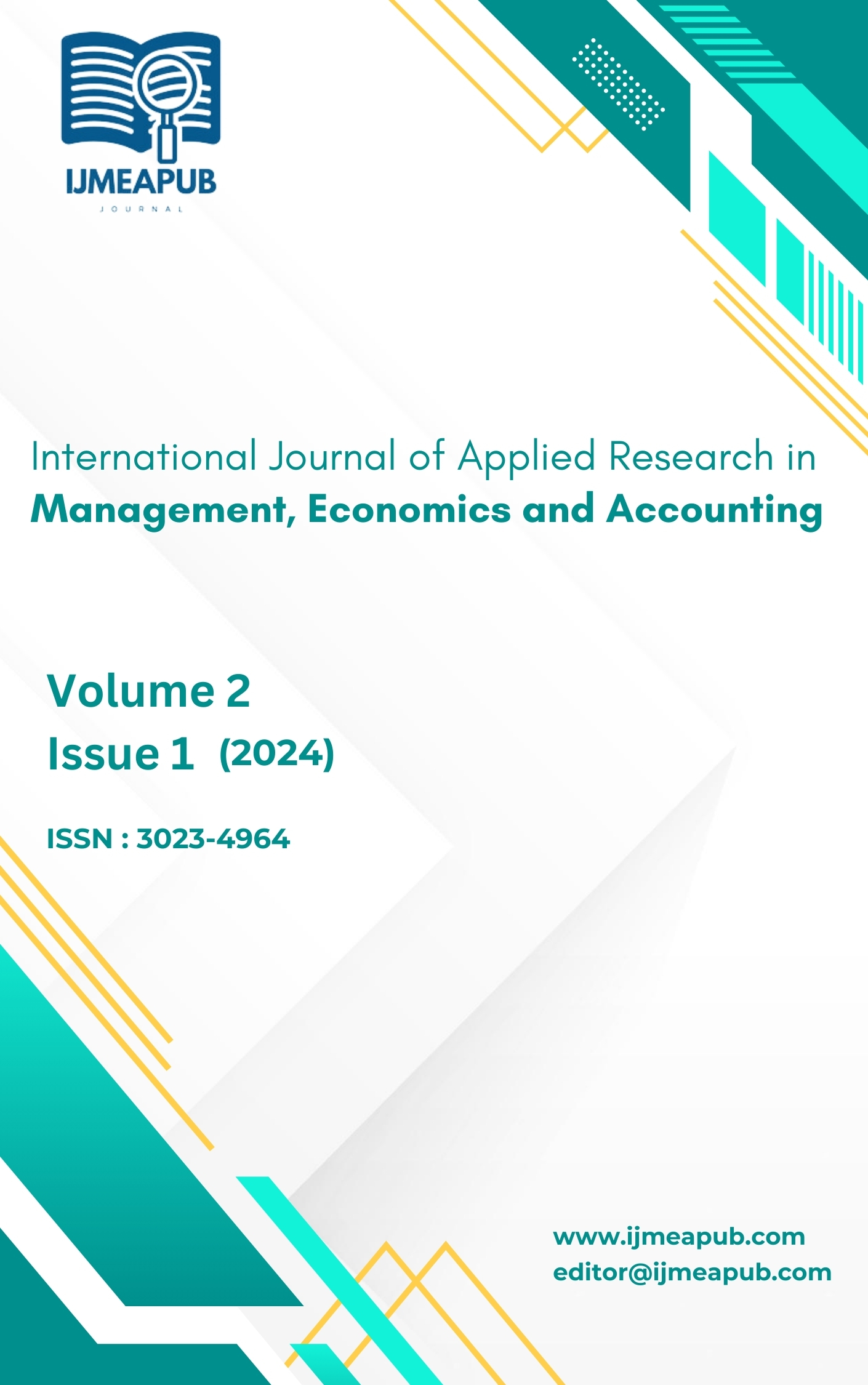How to check the quality of handmade architectural spaces from the perspective of aesthetics using the phenomenology method
DOI:
https://doi.org/10.63053/ijmea.35Keywords:
Architectural Space, Aesthetics in Architecture, User NeedsAbstract
Understanding the environment and the quality of architectural spaces in life is one of the most important issues that thinkers in the fields of architecture and urban planning should pay attention to due to the decline in environmental quality from an aesthetic point of view. They should create an environment that is pleasant and suitable for the spirits and needs of the users, constructing a space where individuals are willing to visit, meet their own needs, and resonate. The background of this research returns to the fields of sociology and psychology since fundamentally the discussed issue related to the sense of architectural space beauty and aesthetic experience is one of the subjects of phenomenological research. In this study, theoretical foundations and initial assumptions for a new design method that will be used in the education of future architects and urban planners have been presented, which will provide a better view of the importance of human factors in architectural spaces and indicate a deep relationship between the quality of architectural spaces and aesthetics, where the cause and effect are intertwined in enhancing the quality of architectural spaces.
References
Kudryavtseva, V. A. (2021). The modern urban environment: development trends and prospects. In IOP Conference Series: Earth and Environmental Science (Vol. 751, No. 1, p. 012027). IOP Publishing.
Habibzadeh Koozehkonani, J., & Abdollahzadehtaraf, A. (2016). Urban Street Design in order to improve the sense of place, Case stady: Golshan e Raz Street of Shabestar.
Ujma-Wasowicz, K., & Fross, K. (2018). Beauty–aesthetics–senses research of attractiveness and magic of the built environment. In Advances in Human Factors, Sustainable Urban Planning and Infrastructure: Proceedings of the AHFE 2017 International Conference on Human Factors, Sustainable Urban Planning and Infrastructure, July 17−21, 2017, The Westin Bonaventure Hotel, Los Angeles, California, USA 8 (pp. 22-32). Springer International Publishing.
Zowisło, M. (2013). The Home and the World. On the Paths of Contemporary Nomads. Folia Turistica, 28(2), 5-19.
Lewicka, M. (2012). Psychologia miejsca. Wydawnictwo Naukowe Scholar.
Jarecka-Bidzińska, E. (2021). Hybrid methodology of multi-sensory research of public space in urban planning. Budownictwo i Architektura, 20(2), 95-117.
Alexander, C. (2018). A pattern language: towns, buildings, construction. Oxford university press.
Celik, S. A. D. (2017). Urban aesthetic and urban landscape design guides: A case study of Bartin-Turkey.
Nia, H. A., & Suleiman, Y. H. (2018). Aesthetics of space organization: lessons from traditional European cities. Journal of Contemporary Urban Affairs, 2(1), 66-75.
Al-Qaraghuli, A. S., & Al-Hinkawi, W. S. (2016). Aesthetic values of the future cities. In 2nd International Conference on Architecture, Structure and Civil Engineering (ICASE’16), London, UK.
Pallasmaa, J., & Choptiany, M. (2012). Oczy skóry: architektura i zmysły. Instytut Architektury.
Oberfeld, D., Hecht, H., & Gamer, M. (2010). Surface lightness influences perceived room height. Quarterly Journal of Experimental Psychology, 63, 1999–2011.
Otterbring, T., Pareigis, J., Wästlund, E., Makrygiannis, A., & Lindström, A. (2018). The relationship between office type and job satisfaction: Testing a multiple mediation model through ease of interaction and well-being. Scandinavian Journal of Work & Environmental Health, 44, 330–334.
Choo, H., Nasar, J., Nikrahei, B., & Walther, D. B. (2017). Neural codes of seeing architectural styles. Scientific Reports, 7, 40201. https://doi.org/10.1038/srep40201.
Ragavendira, R. (2017). Architecture and human senses. International Journal of Innovations in Engineering and Technology (IJIET), 8(2), 131–135.
Pallasmaa, J. The Eyes of the Skin. Architecture and the Senses. John Wiley & Sons, Chichester, 2005.
Baskinger, M., & Gross, M. (2010). Tangible Interaction = Form + Computing. Interactions, 17(1), 6-11.
Ramsgard Thomsen, M. (2009). Textile Logics in a Moving Architecture. Transitive Materials Workshop, CHI 2009 Workshop.
Pallasmaa, J. (1994). An architecture of the seven senses. In S. Holl, J. Pallasmaa, & A. Perez-Gomez (Eds.), Architecture and urbanism: Questions of perception: Phenomenology and architecture (Special issue), July, (pp. 27–37).
Porteous, J. D. (1990). Landscapes of the mind: Worlds of sense and metaphor. Toronto: University of Toronto Press.
Bavister, P., Lawrence, F., & Gage, S. (2018). Artificial intelligence and the generation of emotional response to sound and space. Proceedings of the Institute of Acoustics, 40(3), 8 pages.
Blesser, B., & Salter, L.-R. (2007). Spaces speak, are you listening? Cambridge: MIT Press.
Baus, O., & Bouchard, S. (2017). Exposure to an unpleasant odour increases the sense of presence in virtual reality. Virtual Reality, 21, 59–74.
Hongisto, V., Varjo, J., Oliva, D., Haapakangas, A., & Benway, E. (2017). Perception
of water-based masking sounds—Long-term experiment in an open-plan office. Frontiers in Psychology, 8, 1177.
Haga, A., Halin, N., Holmgren, M., & Sörqvist, P. (2016). Psychological restoration can depend on stimulus-source attribution: A challenge for the evolutionary account. Frontiers in Psychology, 7, 1831.
Prochnik, G. (2009). City of earthly delights. The New York Times December 12th. https://www.nytimes.com/2009/12/13/opinion/13prochnik.html
Calvert, G., Spence, C., & Stein, B. E. (Eds.) (2012). The handbook of multisensory processing. Cambridge: MIT Press.
Ghazanfar, A. A., & Schroeder, C. E. (2006). Is neocortex essentially multisensory? Trends in Cognitive Sciences, 10, 278–285.
Rahimi, Sabouri, & Saber. (2018). The effect of climate on citizens' mental schemas in the urban virtual space, a case example: Elgoli Park, Tabriz. Geography and Environmental Planning, 29(3), 91-110.
Karimi Ayah. (2019). Presenting a conceptual model to understand the role of gender in the aesthetic perception of the environment.
31. Talsma, D. (2015). Predictive coding and multisensory integration: An attentional account of the multisensory
mind. Frontiers in Integrative Neuroscience, 9, 19.
Pallasmaa, J. (2011). Architecture and the existential sense: Space, body, and the senses. In F. Bacci, & D. Melcher (Eds.), Art and the senses, (pp. 579–598). Oxford: Oxford University Press.
Pohl, I. M., & Loke, L. (2012, November). Engaging the sense of touch in interactive architecture. In Proceedings of the 24th Australian Computer-Human Interaction Conference (pp. 493-496).
Downloads
Published
How to Cite
Issue
Section
License
Copyright (c) 2025 Authors

This work is licensed under a Creative Commons Attribution 4.0 International License.








